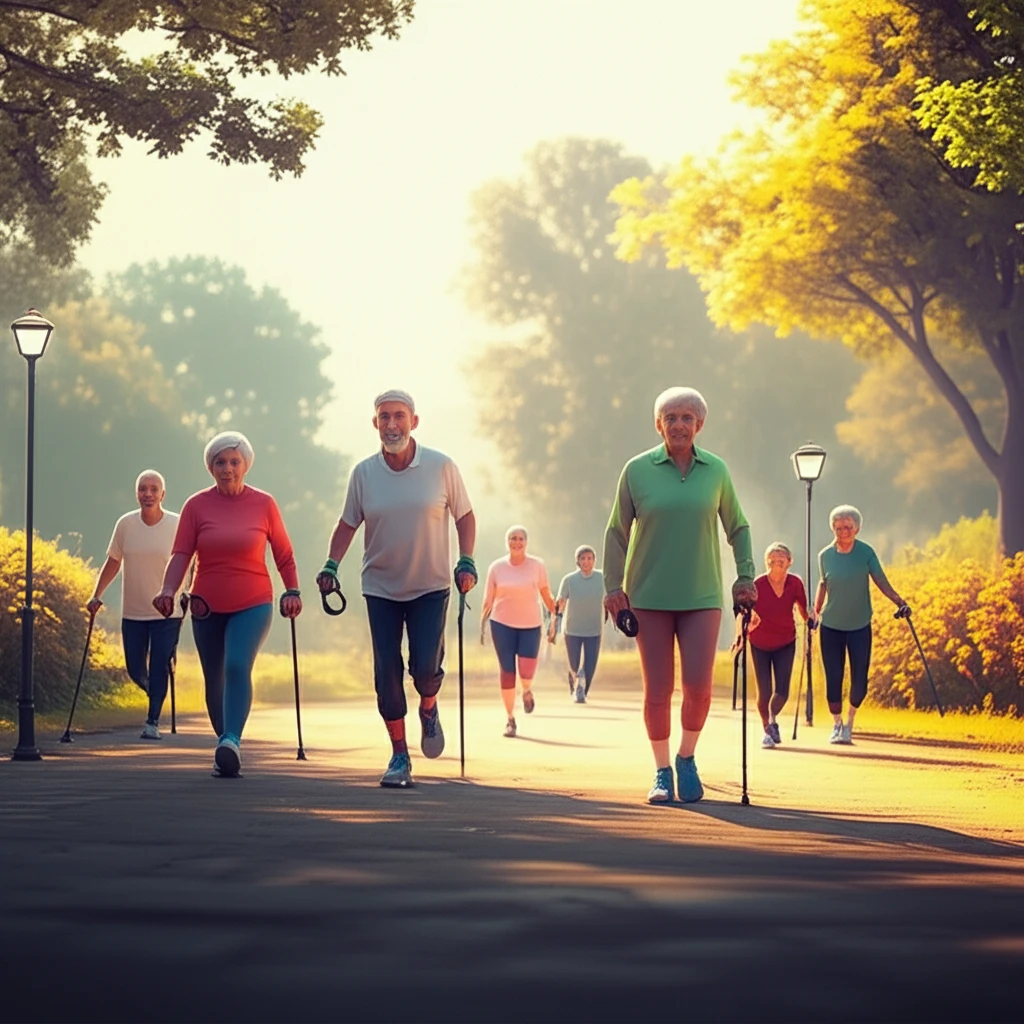
Aging Gracefully: How Physical Activity Impacts Pain in Older Adults
"Uncover the secrets to managing pain and staying active as you age, with practical insights from a recent study on physical activity and well-being."
As we age, maintaining an active and pain-free lifestyle becomes increasingly important. The global population is aging, with a significant rise in the number of individuals over 65. In Asia alone, this demographic is expected to increase dramatically. This shift emphasizes the need to understand the factors that contribute to quality of life in later years, particularly the relationship between physical activity and pain.
While aging brings inevitable physical changes, proactive measures can mitigate many adverse effects. A sedentary lifestyle can accelerate age-related decline, whereas regular physical activity can promote health and well-being. Research suggests that staying active helps prevent illness and enhances physiological functions, underscoring the importance of exercise in managing the aging process.
This article examines the findings of a study that investigates the connection between physical activity and pain among older adults. By understanding this relationship, we can identify strategies to help seniors maintain active, healthy, and fulfilling lives. The research explores various socio-demographic factors, types of physical activities, and their impact on pain levels, providing valuable insights for healthcare professionals and individuals alike.
Understanding the Study: Physical Activity and Pain in Older Adults

A study involving 564 participants with an average age of 61.05 years aimed to determine the prevalence of pain and its correlation with physical activity and socio-demographic factors. The participants were selected from urban and rural areas in Sabah, Malaysia, ensuring a diverse representation. Data was collected through questionnaires and pain scales, focusing on the types of physical activities and the intensity of pain experienced.
- Age Groups: Participants were divided into five-year age brackets, ranging from 40 to 89 years, to observe age-related trends.
- Gender: Both male and female participants were included to identify any gender-specific differences in pain and activity levels.
- Occupation: The study considered five categories—worker, retired, unemployed, homemaker, and student—to examine how different lifestyles affect physical activity and pain.
- Civil Status: Marital status (married, divorced, widowed, single) was assessed to explore its potential influence on activity levels and pain experience.
- Degree of Pain: Pain levels were categorized into three levels: no pain, moderate pain, and intense pain, providing a clear measure of pain severity.
- Level of Physical Activity: Participants were classified as either practicing or not practicing physical activity to determine the impact of exercise on pain.
- Type of Physical Activity: Activities were defined as walking, keep-fit exercises, a combination of both, or other forms of physical conditioning.
Key Takeaways and Recommendations for Active Aging
While the study didn't find a direct link between physical activity and pain reduction, it underscored the importance of tailored exercise programs for older adults. Healthcare providers should develop comprehensive health protocols that consider individual needs, lifestyles, and pain conditions. Encouraging diverse forms of physical activity and creating accessible, modern sporting facilities in rural areas can further support active aging. This approach promotes a holistic view of health, integrating physical, social, and psychological well-being to enhance the quality of life for seniors.
